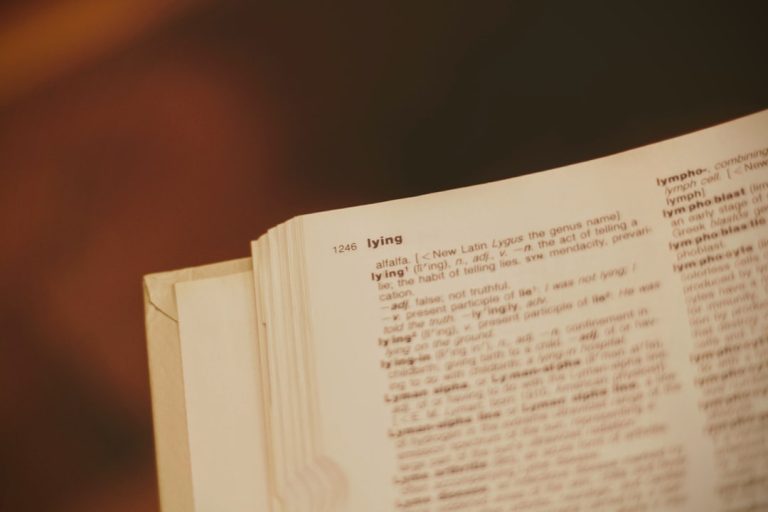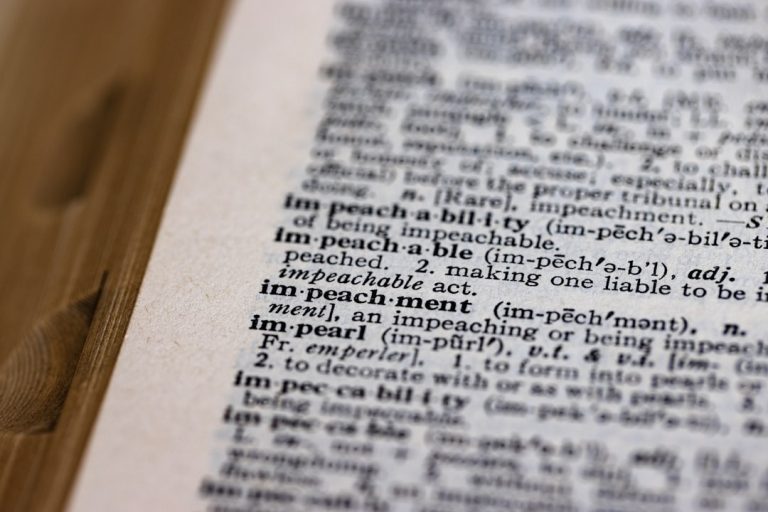
Parentheses and brackets serve distinct yet complementary roles in written communication, acting as tools for clarity and precision. Parentheses, often referred to as round brackets, are primarily used to insert supplementary information or clarifications that enhance the reader’s understanding without interrupting the flow of the main text. For instance, when an author wishes to provide additional context or a side note, they might enclose that information in parentheses.
This allows the reader to grasp the main idea while also having access to extra details that may enrich their comprehension. On the other hand, brackets, which are typically square in shape, are employed for a different purpose. They are often used to include editorial comments, clarifications, or modifications within quoted material.
This is particularly useful in academic writing or journalism, where the integrity of the original text must be preserved while still providing necessary context for the reader. For example, if a quote contains a pronoun that lacks clarity, a writer might insert a bracketed word to specify the subject. Understanding these fundamental purposes is crucial for effective writing, as it allows authors to convey their messages with precision and nuance.
Key Takeaways
- Parentheses and brackets serve different purposes in writing, and understanding their use is crucial for effective communication.
- Proper usage of parentheses in writing includes setting off nonessential information, clarifying or providing additional details, and indicating citations or references.
- Brackets are used to enclose additional information within a quoted passage, to clarify or provide context, or to make editorial comments within a quotation.
- When using parentheses and brackets for citations and references, it’s important to follow the appropriate style guide and maintain consistency throughout the document.
- Overuse and misplacement of parentheses and brackets can disrupt the flow of writing and confuse the reader, so it’s important to use them judiciously and appropriately.
Proper Usage of Parentheses in Writing
Adding Value with Parentheses
Parentheses should only be used to enclose information that is relevant and adds value to the main message. For example, in the sentence “The committee will meet on Thursday (the 15th) to discuss the budget,” the date within parentheses provides essential information that enhances the reader’s understanding of the sentence.
The Risks of Overusing Parentheses
While parentheses can be useful, it is important to avoid overusing them. Excessive reliance on this punctuation can lead to cluttered writing and distract readers from the main points being conveyed. A good rule of thumb is to use parentheses sparingly and only when the additional information is genuinely beneficial.
Streamlining Your Writing
In some cases, it may be more effective to rephrase a sentence rather than using parentheses. For example, instead of writing “The results were inconclusive (which was unexpected),” a more streamlined approach might be “The results were inconclusive, which was unexpected.” This not only maintains clarity but also strengthens the overall flow of the writing.
When to Use Brackets for Additional Information

Brackets are particularly useful when an author needs to provide clarification or context within quoted material. This is especially relevant in academic writing, where precision is paramount. For instance, if an author quotes a statement that includes ambiguous pronouns, they might use brackets to clarify who or what is being referred to.
An example could be: “She [the researcher] found that the results were significant.” Here, the bracketed information ensures that readers understand exactly who “she” refers to, thereby eliminating any potential confusion. In addition to clarifying pronouns, brackets can also be used to insert explanatory notes or comments that enhance the reader’s understanding of a quote. For example, if a historical document contains outdated terminology or references that may not be familiar to contemporary readers, an author might write: “The treaty was signed in 1945 [after World War II ended].” This use of brackets provides essential context without altering the original meaning of the quoted material.
Writers should be mindful of their audience when using brackets; ensuring that any additional information is relevant and enhances comprehension is key to effective communication.
Using Parentheses and Brackets for Citations and References
| Category | Usage |
|---|---|
| Citations | Use parentheses for in-text citations (Smith, 2019). |
| References | Use brackets for references [1] at the end of the document. |
| Multiple Authors | For in-text citations with multiple authors, use parentheses (Smith et al., 2019). |
| Page Numbers | Include page numbers in parentheses for direct quotes (Smith, 2019, p. 25). |
In academic writing, both parentheses and brackets play crucial roles in citations and references. Parentheses are commonly used to enclose in-text citations, providing readers with immediate access to source information without interrupting the narrative flow. For example, one might write: “The study revealed significant findings (Smith, 2020).” This format allows readers to identify the source quickly while maintaining focus on the main argument.
Brackets also have their place in citation practices, particularly when it comes to modifying quoted material for clarity or accuracy. In cases where an author needs to adjust a quote for grammatical consistency or clarity, brackets can be employed effectively. For instance: “The results were [not] what we expected.” Here, the bracketed word alters the original quote slightly but preserves its intended meaning while making it more coherent within the new context.
Understanding how to use both parentheses and brackets effectively in citations not only enhances credibility but also demonstrates a writer’s attention to detail and commitment to scholarly rigor.
Avoiding Overuse and Misplacement of Parentheses and Brackets
While parentheses and brackets can enhance clarity and provide additional context, overusing them can lead to confusion and disrupt the flow of writing. Writers should strive for balance; excessive parentheses can clutter sentences and make them difficult to read. For instance, a sentence like “The results (which were surprising) (and unexpected) (to many experts) were published in a leading journal” becomes cumbersome with too many interruptions.
Instead, consolidating information into fewer parentheses or rephrasing can improve readability: “The surprising results were published in a leading journal.” Misplacement of parentheses and brackets can also lead to misunderstandings. It is essential for writers to ensure that any information enclosed within these punctuation marks is directly relevant to the surrounding text. Misplaced parentheses can create ambiguity; for example, “The committee (which was formed last year) will meet next week” clearly indicates that the committee was formed last year.
Such misplacements can confuse readers and detract from the intended message.
Maintaining Consistency in Punctuation Style with Parentheses and Brackets

Consistency in punctuation style is vital for maintaining professionalism and clarity in writing. When using parentheses and brackets, writers should adhere to a consistent format throughout their work. This includes ensuring uniform spacing around punctuation marks and maintaining consistent styles for enclosing information.
For instance, if an author chooses to use parentheses for supplementary information in one section, they should continue this practice throughout their document rather than switching between parentheses and brackets arbitrarily. Additionally, writers should be aware of how parentheses and brackets interact with other punctuation marks within sentences. For example, when a complete sentence ends with parentheses containing additional information, the period should be placed outside the closing parenthesis if the parenthetical statement is not a complete sentence itself: “The results were conclusive (see Appendix A).
(This was unexpected.)” Maintaining such consistency not only enhances readability but also reflects a writer’s attention to detail.
Special Considerations for Using Parentheses and Brackets in Technical Writing
Technical writing often demands precision and clarity due to its focus on conveying complex information succinctly. In this context, both parentheses and brackets serve specific functions that can aid in achieving these goals. Parentheses may be used to provide definitions or explanations of technical terms without disrupting the flow of information.
For example: “The process involves several stages (e.g., initiation, planning, execution).” This allows readers unfamiliar with certain terminology to grasp essential concepts without overwhelming them with excessive detail. Brackets also play an important role in technical writing by allowing authors to clarify or modify technical jargon within quoted material. For instance: “The algorithm [developed by Smith et al.] significantly improved efficiency.” Here, brackets help specify which algorithm is being referenced while maintaining fidelity to the original source material.
In technical documents where precision is paramount, using these punctuation marks judiciously can enhance understanding and ensure that complex ideas are communicated effectively.
Tips for Mastering the Use of Parentheses and Brackets in Your Writing
To master the use of parentheses and brackets in writing, one must practice mindful application of these punctuation marks while remaining aware of their distinct functions. A useful tip is to read sentences aloud; this can help identify areas where parentheses may disrupt flow or where additional clarification might be needed through brackets. By listening to how sentences sound, writers can better gauge whether their use of punctuation enhances or detracts from clarity.
Another effective strategy is to review examples from well-regarded publications or academic papers that demonstrate proper usage of parentheses and brackets. Observing how experienced writers incorporate these punctuation marks can provide valuable insights into best practices and inspire confidence in one’s own writing style. Additionally, seeking feedback from peers or mentors can help identify patterns of overuse or misplacement that may not be immediately apparent during self-editing.
Ultimately, mastering parentheses and brackets requires practice and attention to detail. By understanding their purposes, adhering to consistent styles, and being mindful of their impact on readability, writers can effectively utilize these punctuation marks as tools for enhancing clarity and precision in their work.
If you are looking to improve your English writing skills, you may also be interested in checking out the article “How to Improve English Writing: An English Learner’s Guide eBook” from ESL Institute. This article provides valuable tips and strategies for English learners who want to enhance their writing abilities. By incorporating the punctuation rules discussed in the article on American English Punctuation: Parentheses and Brackets, you can further refine your writing skills and effectively communicate your ideas. Check out the article here for more information.
FAQs
What are parentheses and brackets in American English punctuation?
Parentheses () and brackets [] are punctuation marks used to set off or enclose additional information within a sentence.
How are parentheses used in American English punctuation?
Parentheses are used to enclose non-essential or supplementary information within a sentence. They can also be used to indicate an aside or to enclose an acronym or abbreviation.
How are brackets used in American English punctuation?
Brackets are used to enclose added information within a quotation, to indicate editorial comments within a quotation, or to clarify or provide context for a quoted passage.
What is the difference between parentheses and brackets in American English punctuation?
The main difference between parentheses and brackets is the type of information they enclose. Parentheses are used for non-essential or supplementary information, while brackets are used for added information within a quotation or to provide editorial comments.
Can parentheses and brackets be used interchangeably in American English punctuation?
No, parentheses and brackets serve different purposes in American English punctuation and should not be used interchangeably. It is important to use the correct punctuation marks based on the type of information being enclosed.






